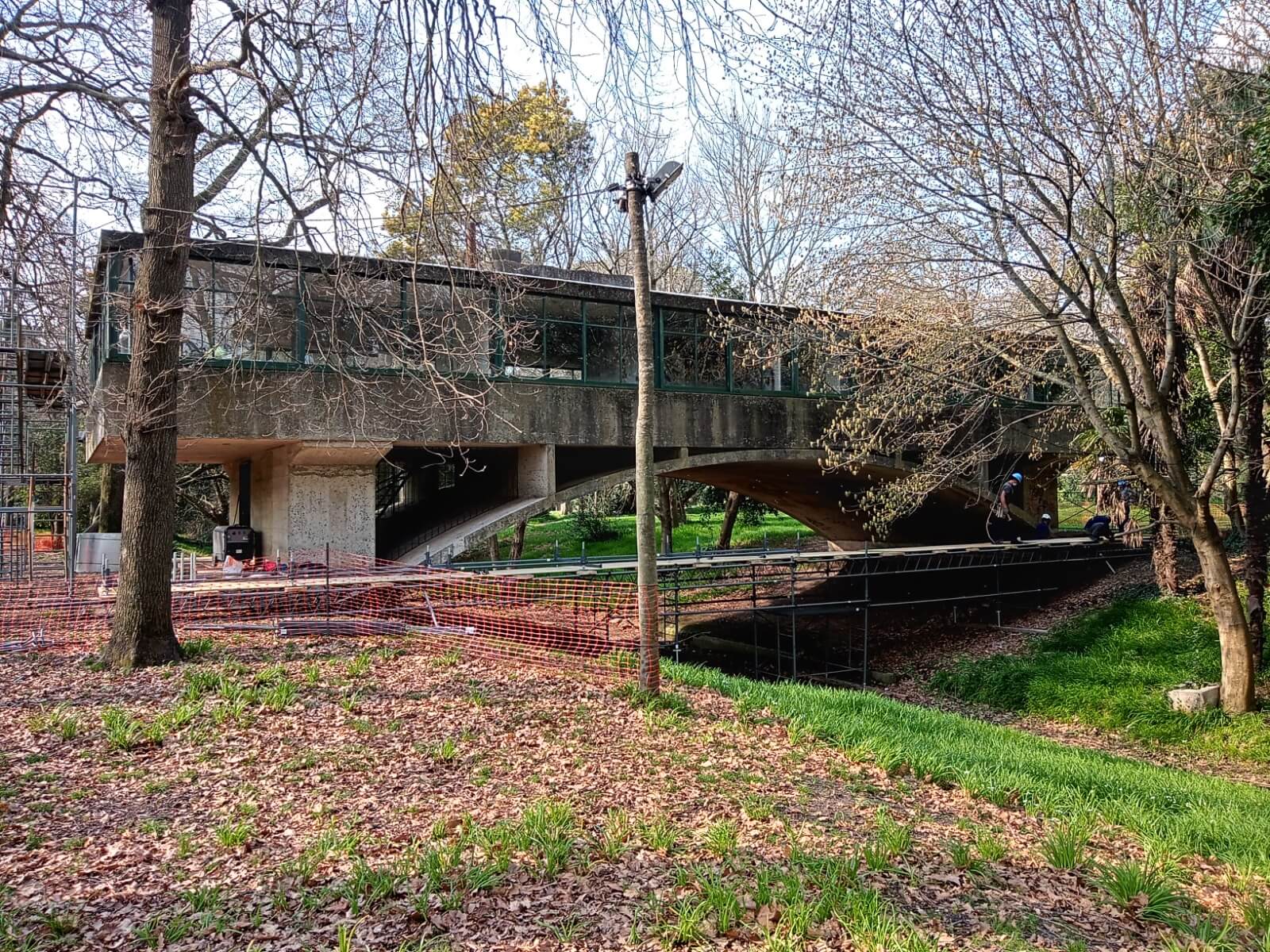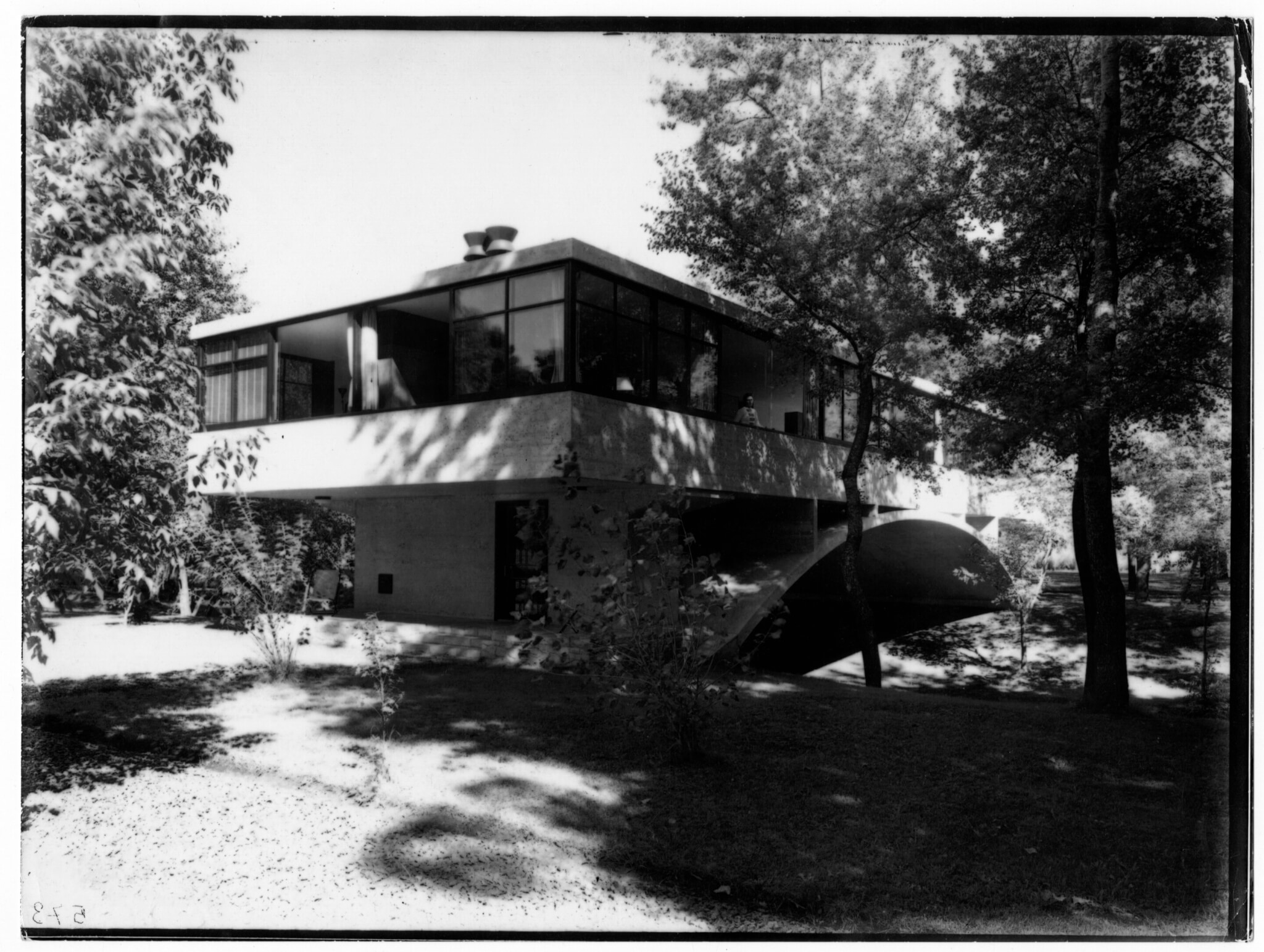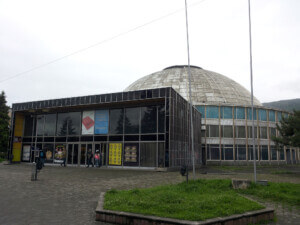In a forested park setting in Mar del Plata, Argentina, architect Amancio Williams designed an abode for his musician father. The stream-straddling Casa sobre el Arroyo (House on the Stream) was seemingly left to decay in its arboreal surroundings until the Ministerios de Cultura y de Obras Públicas de Argentina and the Municipalidad de Mar del Plata stepped in with one goal: to restore it. Now, following a restoration job that took several years, The World Monuments Fund (WMF) has named the Modernist residence as the 2024 World Monuments Fund/Knoll Modernism Prize winner. It is the first South American modernist project to receive the award, a biennial prize celebrating the innovative solutions of preservationists, designers, and architects that preserve or restore modern architecture at-risk.
The preservation work by the Ministerios de Cultura y de Obras Públicas de Argentina and the Municipalidad de Mar del Plata on the 1940’s avant garde icon repairs the building following a suite of issues, among these fire damage, natural decay, and vandalization during a period of abandonment.

Conceptualized by Argentine architect Amancio Williams, alongside his wife Delfina Galvez Bunge de Williams, Casa sobre el Arroyo served as the former home of Argentine musician and composer Alberto Williams, the architect’s father. Built within a park, Williams designed a house transformed into a bridge, with the Las Chacras stream running below it.
“As the iconic first building of Amancio Williams, la Casa sobre el Arroyo exemplified its creator’s reputation as one of the most tirelessly experimental architects of the modern movement,” chairman of the jury and professor at Columbia University, Barry Bergdoll said in a statement.

Completed in 1948 the residence skirts an unadorned reinforced concrete exterior. A single floor of the rather rectangular volume is suspended by an arch that lifts its fenestration up into the treetops. The house’s interiors, furnished by Williams’s wife, donned a large living room, a series of bedrooms, and a studio for the architect’s father’s musical work.
Following Alberto Williams’s death in 1952, Casa sobre el Arroyo housed a local radio station. When the broadcasts stopped, the house was left abandoned and a slew of ownership disputes ensured. Years of neglect brought to the building to a severe state of deterioration. In 2012, the World Monuments Fund called attention to Casa sobre el Arroyo’s dire condition and added it to its watch list, amid calls for its restoration. It wasn’t until 2016, when the Ministerios de Cultura y de Obras Públicas de Argentina y Municipalidad de Mar del Plata finally took action that a plan was formally launched to restore not only Casa sobre el Arroyo, but also its forest landscape.

To reinstate original architectural elements of the storied residence the government agencies turned to archival sketches. The surrounding green space was designated as a historic garden, and the stream, which inspired the inventive design, was replenished after it stopped flowing.

Jury member and Head of Buildings and Sites at the Getty Conservation Institute Susan Macdonald said in a statement, “the project is a testament to how careful research-based conservation, attention to detail, and dedication to high-quality craftsmanship by its stewards can bring modern architecture back to life from a precarious state of decay.”











